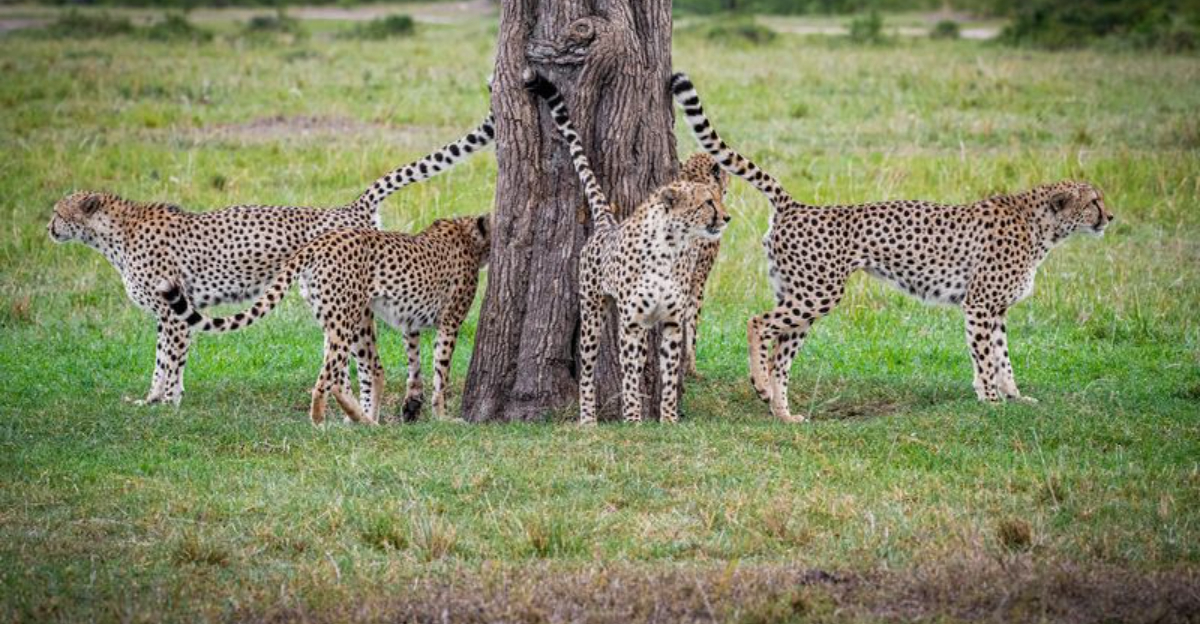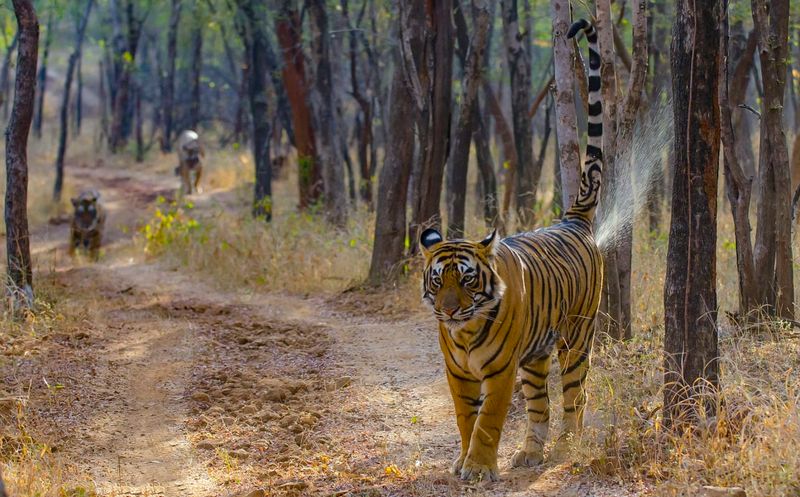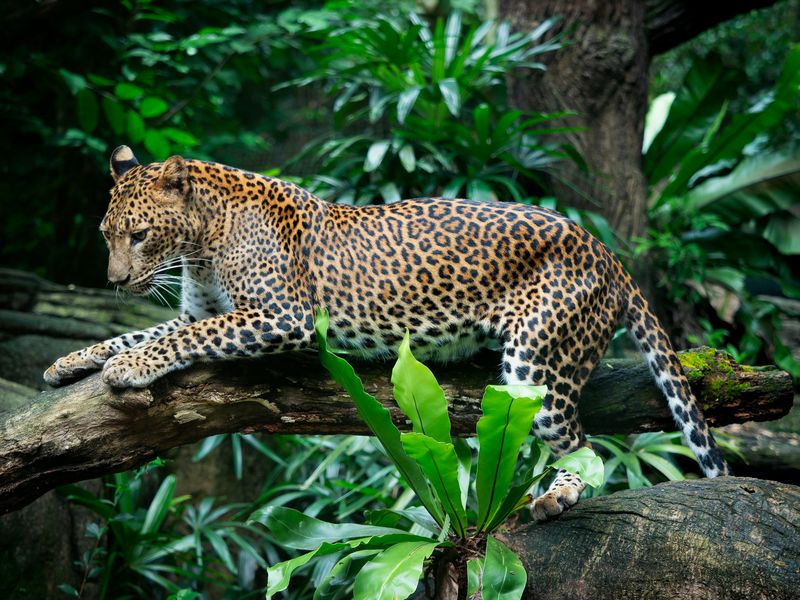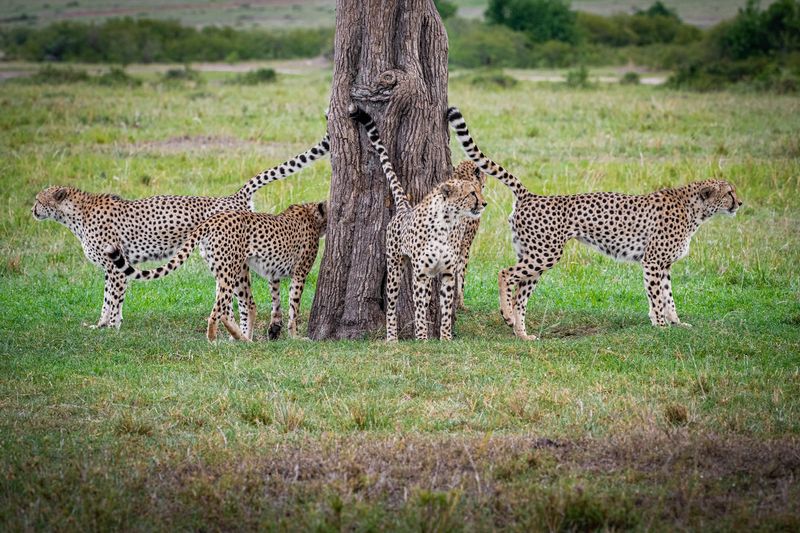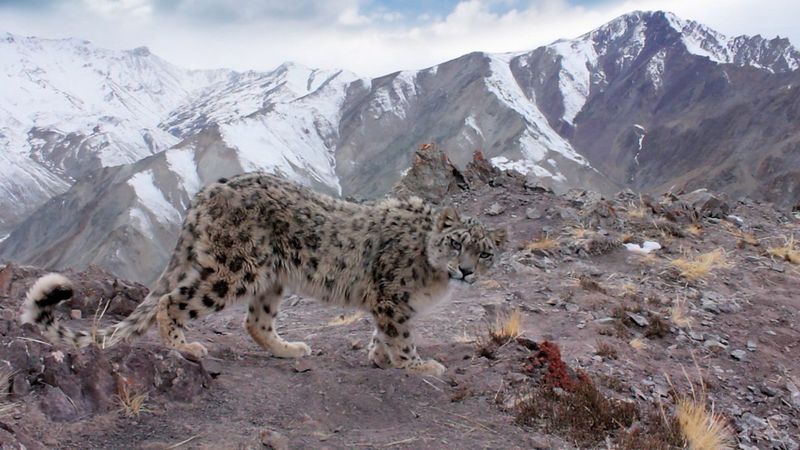📖 Table of Content:
Explore the fascinating world of big cats as they navigate the complexities of territorial establishment and defense. These majestic creatures rely on their territories for survival, using unique strategies suited to their species and environments. From the resonating roars of lions to the stealthy scent markings of leopards, each species exhibits distinct behaviors to claim and protect their domain. Understanding these behaviors is crucial for conservation efforts, as human encroachment continues to threaten their natural habitats. Join us as we delve into the strategies of seven remarkable big cat species and their territorial prowess.
1. Lions: The Royal Guardians
Lions, often called the kings of the jungle, are unique among big cats due to their social structure, living in groups known as prides. Male lions play a pivotal role in defending their territories, often patrolling borders and using vocalizations, such as roaring, to deter intruders. Their roars can echo across the savannah for miles, sending powerful warnings to rival males. Additionally, lions mark their territories through scent marking, using urine and other secretions. This not only communicates ownership but also reduces the likelihood of confrontations, ensuring the pride’s survival.
2. Tigers: Solitary Sentinels
The largest of the big cats, are solitary animals that establish and defend territories influenced by prey density and habitat type. They mark their domains using scent markings, such as spraying urine and leaving scratch marks on trees, to communicate presence to other tigers. Vocalizations, including growls and roars, further assert dominance, deterring potential intruders. These methods help tigers maintain their territories, avoiding unnecessary conflicts. In forests and grasslands, these solitary sentinels rely on stealth and strength to protect their home ranges, ensuring ample resources for survival.
3. Leopards: The Silent Watchers
Leopards are solitary and highly adaptable, known for their silent vigilance over territories that vary greatly in size. They use a combination of vocal calls, scent markings, and visual signals to delineate their realms. Often resting in trees, leopards gain an advantageous vantage point to survey their domain and spot potential intruders. This arboreal lifestyle not only aids in territory surveillance but also conserves energy for hunting. Their adeptness at navigating diverse environments makes leopards formidable guardians of their territories, balancing stealth with strategic observation.
4. Cheetahs: Speedy Strategists
Renowned for their speed, have territories ranging from 15 to 30 square miles. Males may form small groups called coalitions, which effectively hold larger territories. Unlike other big cats, cheetahs usually avoid aggressive confrontations, instead relying on their speed and agility to evade conflicts. They establish presence through scent marking, such as urine spraying on trees and marking posts. This strategy enables them to maintain territories without engaging in fights, preserving energy for hunting. Their unique social structure and non-confrontational approach make cheetahs distinctive among the big cats.
5. Snow Leopards: Ghosts of the Mountains
Elusive inhabitants of the mountainous regions, are often referred to as the ghosts of the mountains due to their incredible camouflage and elusive nature. These solitary cats mark their territories using scent markings and vocalizations, echoing through the peaks to communicate with other snow leopards. Their territories are vast, spanning harsh, rugged terrains that require expert navigation. The snow leopard’s keen senses and stealth allow it to thrive in this challenging environment, maintaining its territory against the backdrop of breathtaking alpine vistas.
6. Jaguars: Jungle Enforcers
Powerful and enigmatic, rule the rainforests of South and Central America with unmatched prowess. They establish territories through a combination of scent markings and scratch marks on trees, asserting their presence in the dense jungle. Jaguars are adept swimmers, often using waterways within their territories for hunting and travel. This aquatic affinity sets them apart from other big cats, as they seamlessly blend strength and stealth. Jaguars maintain their dominance in the jungle with a combination of powerful physicality and strategic territorial markings.
7. Pumas: Versatile Wanderers
Pumas, also known as cougars or mountain lions, are among the most adaptable big cats, with territories spanning diverse habitats across the Americas. They utilize vocalizations and scent markings to communicate ownership over their domains. These versatile wanderers navigate rocky cliffs, forests, and open plains with ease, demonstrating remarkable adaptability. Pumas’ ability to traverse varied landscapes makes them efficient hunters and elusive guardians of their territories. Their prowess in adjusting to different environments while maintaining control over their expansive territories highlights their unique survival strategies.
